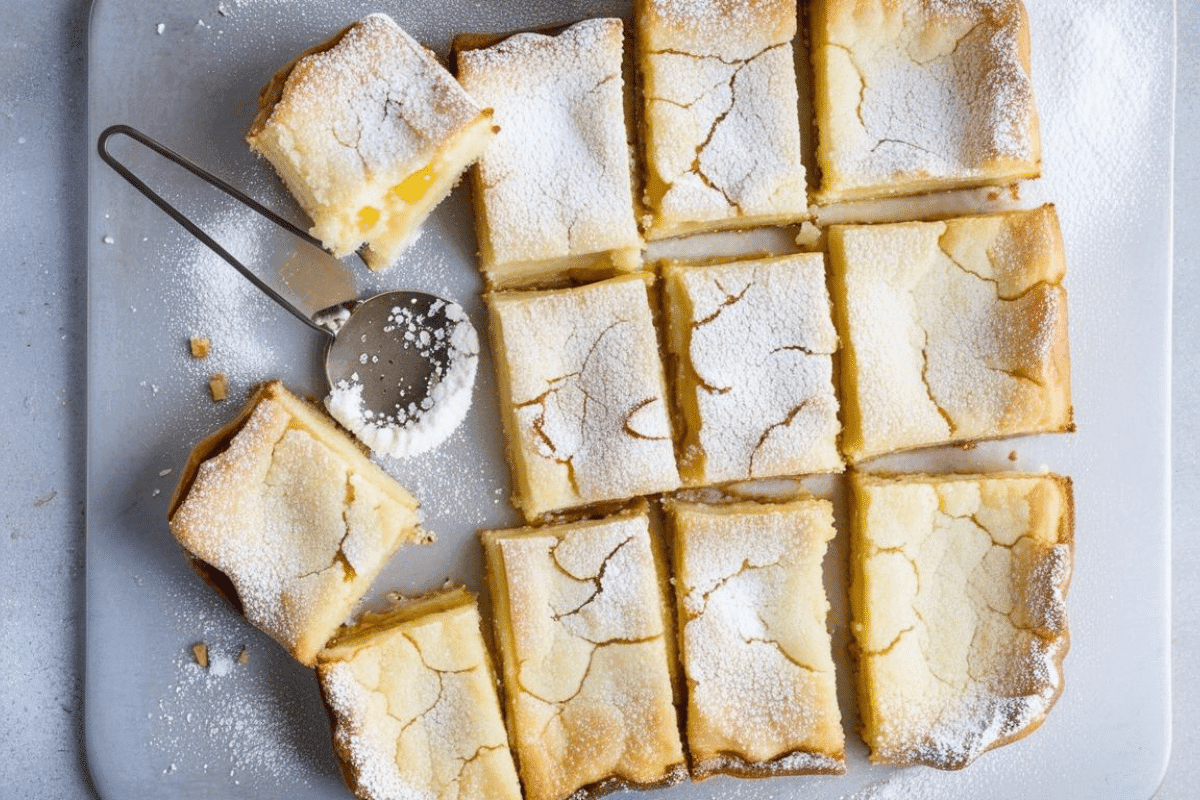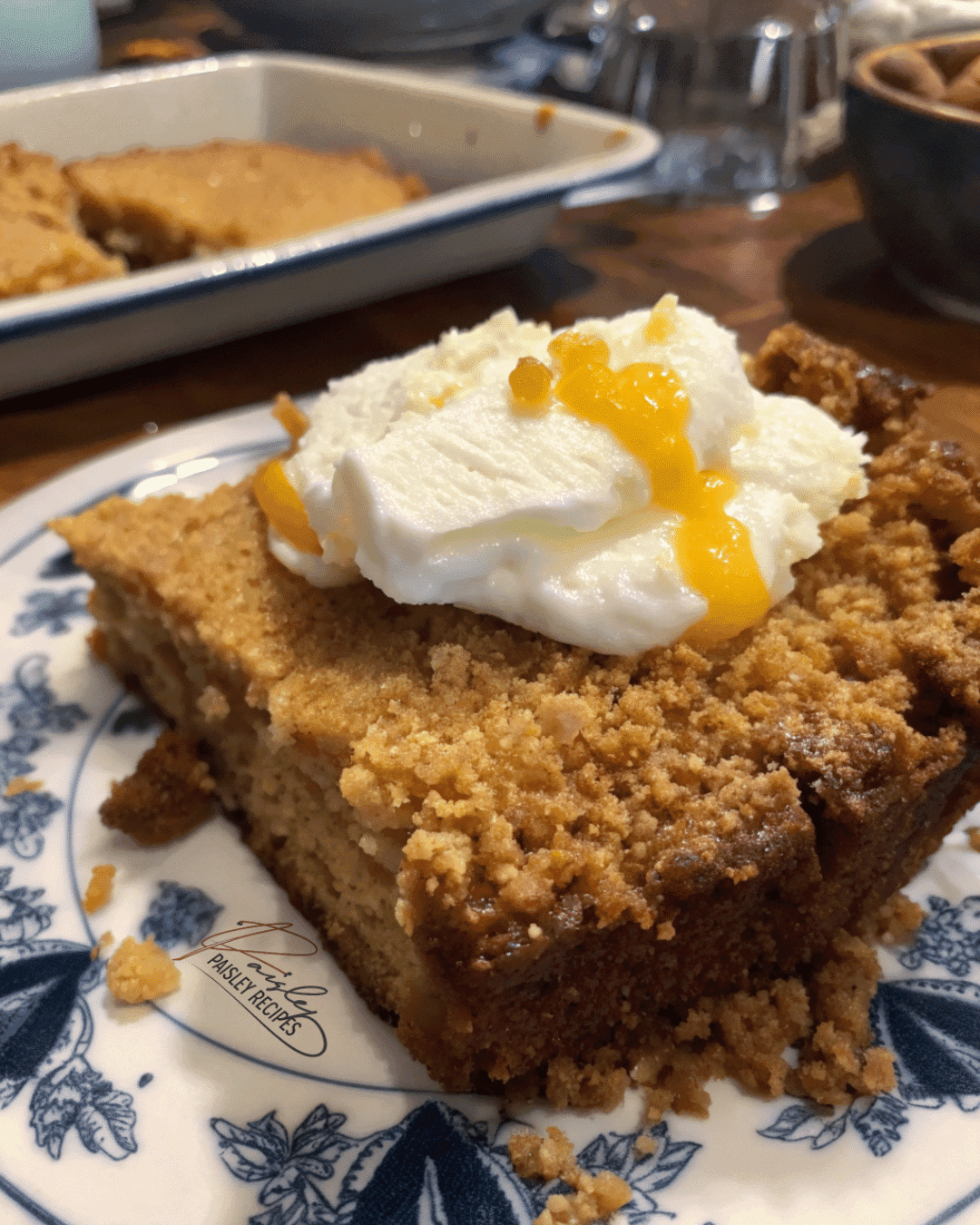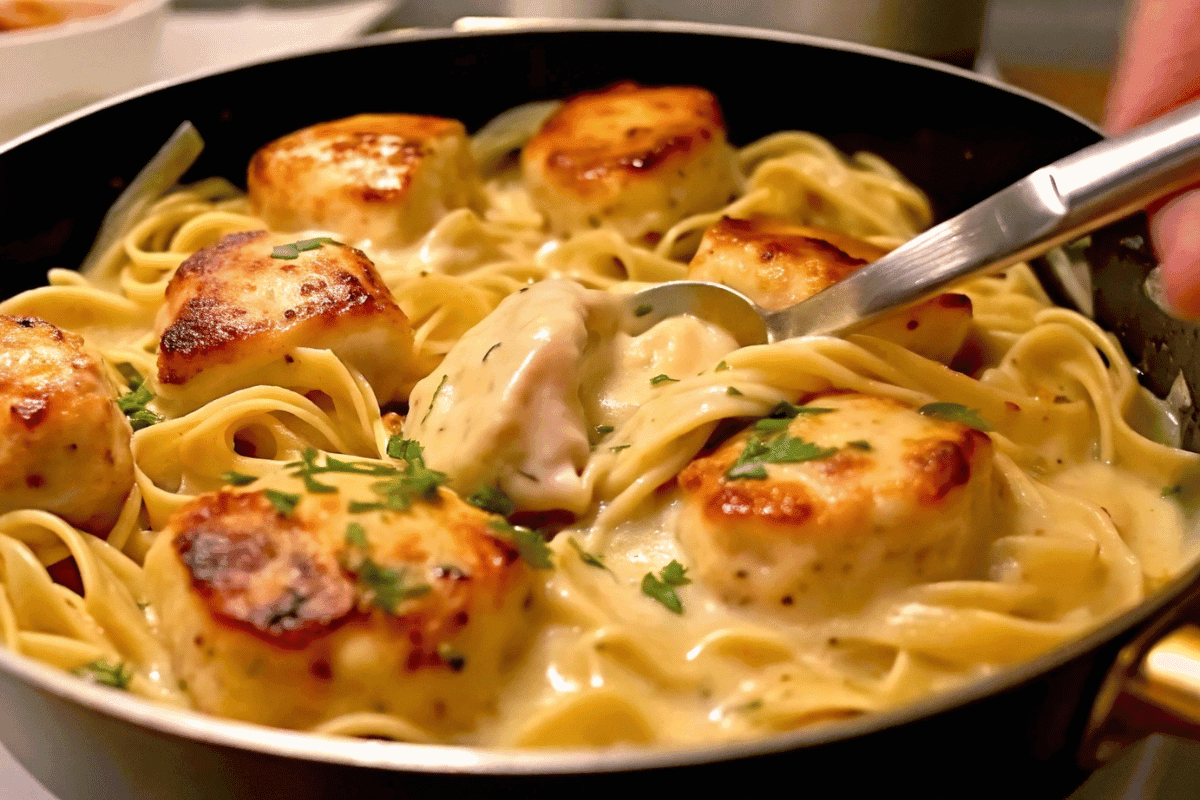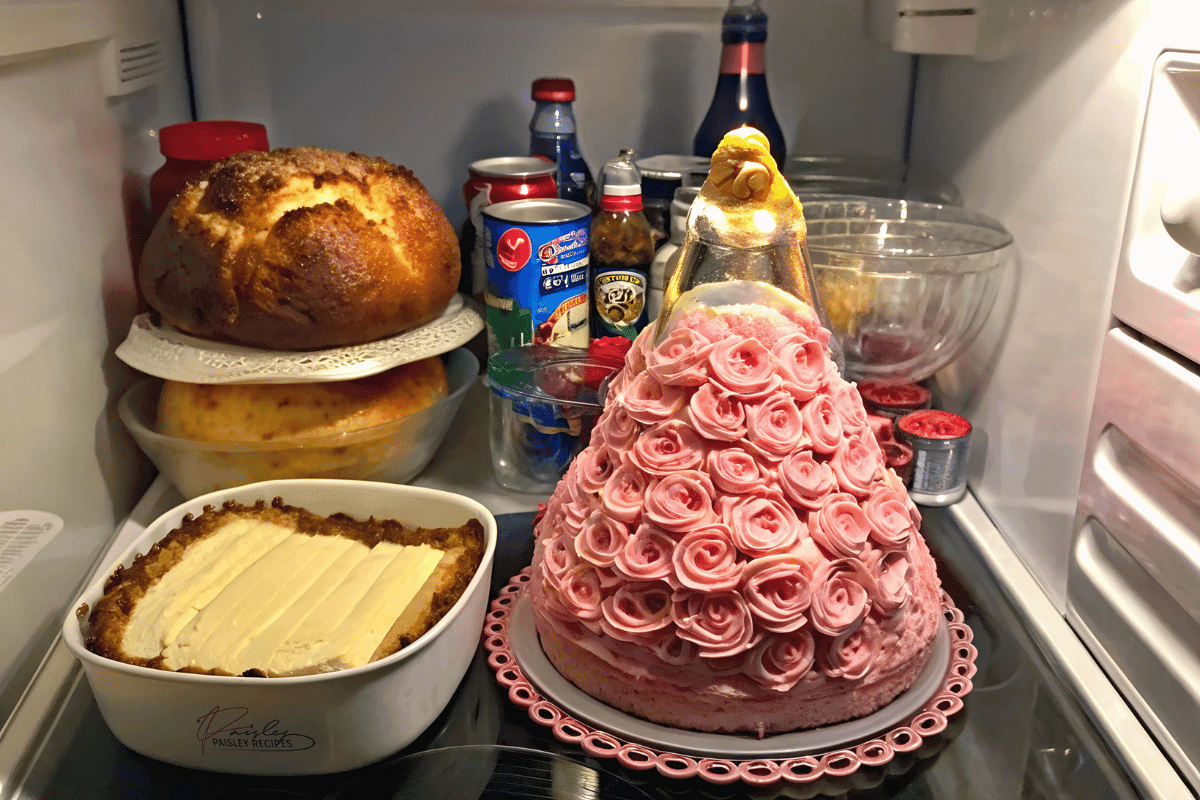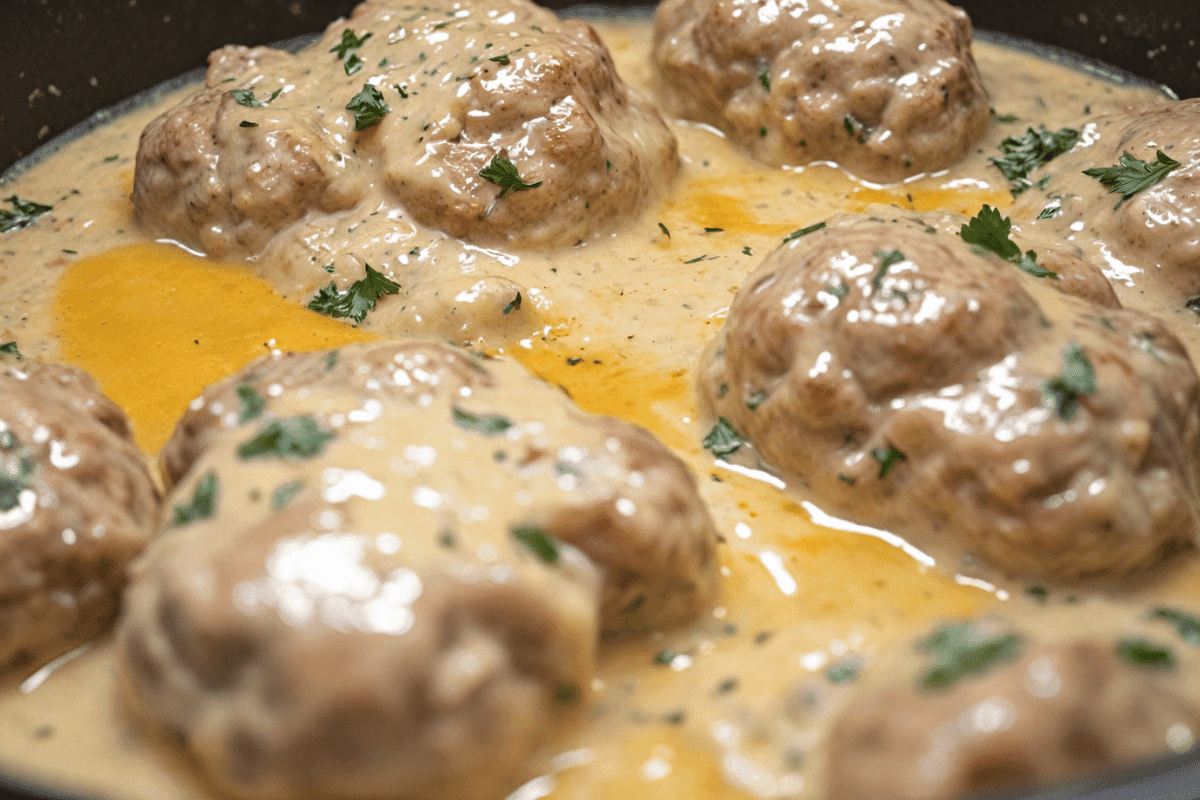Introduction to Butter Cake
Butter cake is the epitome of classic baking—simple, moist, and utterly delicious. Whether you’re a seasoned baker or someone trying their hand at baking for the first time, this butter cake recipe will become your go-to. With just a few basic ingredients, you can create a light, tender cake that’s perfect for any occasion. The charm of butter cake lies in its simplicity. Unlike more complex cakes, butter cake relies on the richness of butter and the balance of sugar, eggs, and flour to create its signature flavor and texture.
The beauty of this recipe is its versatility. Whether you want to enjoy it as-is or experiment with different flavorings like vanilla, almond, or citrus zest, butter cake provides the perfect canvas. You can serve it as a standalone dessert, dress it up with frosting, or layer it with whipped cream and berries for a more elaborate treat.
Beyond its great taste and texture, butter cake is loved for its simplicity. Busy home cooks, working professionals, and even novice bakers will appreciate that it requires minimal effort and time to make. Whether you’re whipping up a dessert for a dinner party or just indulging in a homemade treat, this butter cake recipe checks all the boxes. Plus, it’s easily adaptable for different dietary preferences, including gluten-free and vegan options.
Ready to bake the ultimate butter cake? Let’s dive into the details.
Benefits and Advantages of Butter Cake
When it comes to butter cake, there are numerous reasons why it stands out from other types of cakes. From its simplicity in preparation to its rich, buttery flavor, butter cake has become a favorite among home bakers and professionals alike.
Ease of Preparation
One of the major benefits of butter cake is how easy it is to make. With a handful of ingredients—most of which you likely already have in your pantry—you can whip up this cake in no time. There’s no need for special techniques or fancy equipment. Unlike more complex cakes like chiffon or sponge, which require a delicate balance of ingredients and technique, butter cake comes together with straightforward creaming, mixing, and baking steps.
Versatility
Butter cake is incredibly versatile. Whether you enjoy it plain, with a dusting of powdered sugar, or smothered in your favorite frosting, the possibilities are endless. You can transform it into a layered cake, make cupcakes from the same batter, or turn it into a loaf for an afternoon tea. It pairs well with various flavors, allowing you to easily modify the recipe to suit your taste preferences. Add a splash of vanilla extract, lemon zest, or even almond essence to customize the cake to your liking.
Comparisons with Other Cakes
Compared to pound cake, butter cake has a lighter, airier texture due to the ratio of ingredients. While pound cake typically uses equal parts of flour, sugar, butter, and eggs, butter cake incorporates slightly less butter and sugar, which results in a less dense crumb. If you’re someone who enjoys a cake with a lighter bite but the same rich flavor, butter cake offers the perfect compromise.
In comparison to sponge cakes, which rely on whipped eggs to create volume, butter cake has a more traditional, straightforward approach. You won’t need to worry about whipping egg whites or folding delicate batters—making butter cake a more approachable option for bakers of all skill levels.
Suitable for Various Dietary Preferences
Another great advantage of butter cake is its ability to be customized for different diets. Whether you need a gluten-free version for someone with celiac disease or a dairy-free option for a vegan friend, there are simple substitutions you can make without sacrificing flavor or texture. Gluten-free flours, plant-based butters, and egg substitutes can all be used effectively in this recipe.
In short, butter cake offers a delightful balance between taste, texture, and versatility. It’s a recipe that works for almost any occasion, and with a few small tweaks, it can accommodate various dietary needs as well.
Ingredients Overview
Before you start baking, it’s important to gather all your ingredients and understand the role they play in the recipe. While butter cake uses simple pantry staples, each ingredient is crucial in contributing to the flavor and texture of the final product.
Essential Ingredients for Butter Cake
- Butter (1 cup/230g, softened): The star of the show! Butter provides richness and a moist texture to the cake. Make sure your butter is softened to room temperature for easier mixing.
- Granulated Sugar (1 ½ cups/300g): Sugar sweetens the cake and helps to create a tender crumb. It also helps to aerate the butter during the creaming process, contributing to a lighter texture.
- Eggs (4 large): Eggs add structure to the cake and help bind the ingredients together. They also contribute to the cake’s rise, thanks to the protein content, which helps create a light, fluffy texture.
- All-Purpose Flour (2 ¾ cups/340g): Flour provides the structure of the cake. It forms the base of the batter and creates the crumb when combined with other ingredients.
- Baking Powder (1 ½ tsp): Baking powder helps the cake rise and contributes to its fluffy texture.
- Salt (¼ tsp): Salt enhances the flavors in the cake, balancing out the sweetness and amplifying the buttery richness.
- Milk (¾ cup/180ml): Milk adds moisture to the cake and helps to thin out the batter, making it easier to mix and pour.
- Vanilla Extract (2 tsp): This adds a depth of flavor, enhancing the overall taste of the cake.
Optional Ingredients:
- Almond Extract (½ tsp): For a more aromatic flavor, you can replace some of the vanilla extract with almond extract.
- Lemon Zest (1 tsp): Adding zest can brighten up the flavor of the cake and give it a subtle citrus note.
Dietary Substitutions to Customize Your Butter Cake
Whether you’re catering to dietary restrictions or just looking for healthier alternatives, this butter cake recipe can easily be adapted to suit different needs.
- Vegan Butter Cake: To make this recipe vegan, substitute the butter with plant-based margarine or a non-dairy butter alternative. Replace the eggs with an egg substitute like a flaxseed egg (1 tbsp ground flaxseed mixed with 3 tbsp water equals one egg). For the milk, opt for almond milk, soy milk, or any other plant-based milk.
- Gluten-Free Butter Cake: For those avoiding gluten, use a gluten-free all-purpose flour blend. Make sure it includes xanthan gum or a similar binding agent to ensure the cake holds together properly.
- Low-Calorie Butter Cake: If you’re looking to cut down on calories, consider using a sugar substitute like stevia or erythritol in place of granulated sugar. You can also use light butter or a low-calorie margarine for a lower-fat version of the cake.
These substitutions allow you to enjoy the classic taste of butter cake while accommodating your dietary preferences or restrictions. Now that we’ve covered the essential ingredients, let’s move on to how to prepare the perfect butter cake.
How to Prepare the Perfect Butter Cake: Step-by-Step Guide
Step 1: Creaming the Butter and Sugar
Start by preheating your oven to 350°F (175°C) and preparing your cake pans. Grease two 9-inch round cake pans with butter or non-stick spray, then line them with parchment paper.
In a large mixing bowl, cream the softened butter and sugar together using a hand mixer or stand mixer. This process should take about 3-5 minutes. The goal is to beat air into the mixture, which helps create a light, fluffy texture in the cake. You’ll know it’s ready when the mixture is pale and fluffy.
Step 2: Adding Eggs and Mixing
Next, add the eggs to the creamed butter and sugar one at a time, beating well after each addition. This ensures that the eggs are fully incorporated and helps prevent the batter from curdling. If you add all the eggs at once, the mixture may not emulsify properly, which can lead to a dense cake.
Once all the eggs are incorporated, add the vanilla extract (and almond extract if using) and mix until combined.
Step 3: Folding in Dry Ingredients
In a separate bowl, whisk together the flour, baking powder, and salt. Gradually add the dry ingredients to the wet mixture, alternating with the milk. Start by adding one-third of the flour mixture, then half of the milk, and repeat until all the ingredients are combined. Be careful not to overmix at this stage, as overworking the batter can lead to a tough cake.
Step 4: Baking the Cake
Once the batter is smooth and fully combined, divide it evenly between your prepared cake pans. Use a spatula to smooth the tops of the batter, ensuring an even bake.
Place the pans in the preheated oven and bake for 25-30 minutes, or until a toothpick inserted into the center comes out clean. If the cakes are browning too quickly on top, you can tent them with foil halfway through baking.
Once baked, remove the cakes from the oven and let them cool in the pans for about 10 minutes. Then, transfer them to a wire rack to cool completely before frosting or serving.
Now that you’ve baked the perfect butter cake, let’s dive into some advanced tips to make sure you master this recipe.
Mastering Butter Cake: Advanced Tips and Variations
Avoiding Common Mistakes
- Overmixing: As mentioned earlier, be careful not to overmix the batter once the flour is added. Overmixing can activate too much gluten, resulting in a dense cake.
- Butter Temperature: Make sure your butter is softened to room temperature before creaming it with sugar. If the butter is too cold, it won’t aerate properly, resulting in a dense cake. If it’s too melted, the cake may end up greasy.
- Even Baking: To ensure even baking, rotate your pans halfway through the baking time. Also, make sure the batter is spread evenly in the pans before putting them in the oven.
Flavor Variations
Want to experiment with your butter cake? Here are a few flavor variations you can try:
- Lemon Butter Cake: Add 1 tablespoon of lemon zest and 1 teaspoon of lemon extract to the batter for a bright, citrusy twist.
- Chocolate Butter Cake: Replace ½ cup of flour with ½ cup of cocoa powder to create a rich, chocolate-flavored butter cake.
- Spiced Butter Cake: Add 1 teaspoon of cinnamon, ½ teaspoon of nutmeg, and a pinch of cloves to the batter for a warm, spiced variation.
How to Store Butter Cake: Best Practices
Butter cake can be stored at room temperature for 2-3 days, covered tightly in plastic wrap or in an airtight container. If you plan to keep it longer, consider refrigerating it, which will extend its freshness for up to a week.
For longer storage, you can freeze butter cake. Wrap the cooled cake layers tightly in plastic wrap, followed by aluminum foil, and store them in the freezer for up to 3 months. When ready to use, thaw the cake in the refrigerator overnight and bring it to room temperature before serving or frosting.
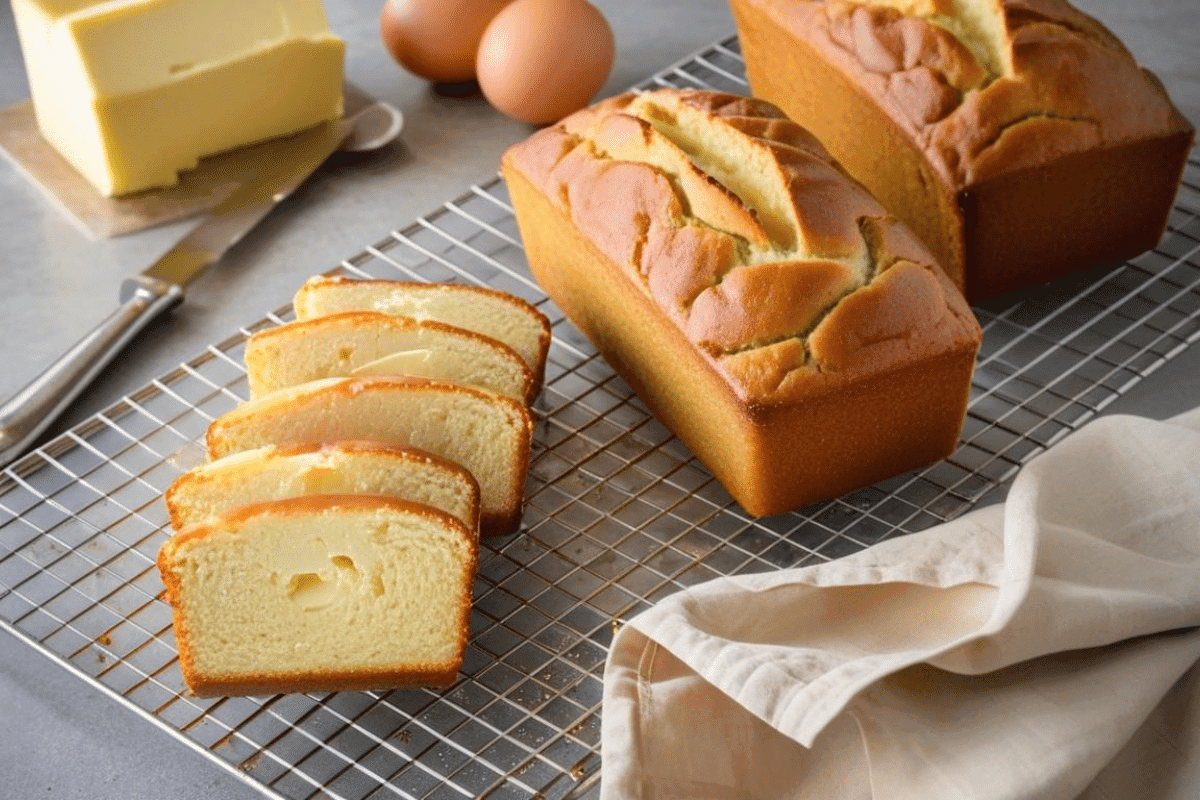
Nutritional Value of Butter Cake
A single slice of traditional butter cake (1/12th of the cake) contains approximately:
- Calories: 350-400
- Total Fat: 18-20g
- Saturated Fat: 10-12g
- Cholesterol: 100-120mg
- Sodium: 200-250mg
- Carbohydrates: 45-50g
- Sugars: 30-35g
- Protein: 5-6g
If you’re making substitutions (such as using plant-based butter or gluten-free flour), the nutritional values will vary. Keep in mind that additional toppings or frostings will also increase the calorie count.
FAQs: Frequently Asked Questions
What can you use instead of butter for baking a cake?
If you’re looking for a substitute for butter, you can use margarine, vegetable oil, or even applesauce in some cases. Each will give the cake a slightly different texture and flavor. For a vegan option, plant-based butter alternatives work well. Know More About What Can You Use Instead of Butter Baking Lava Cake?
What is a cake made without eggs, milk, and butter?
A cake made without eggs, milk, or butter is typically known as a vegan cake. These cakes rely on substitutes like flax eggs, plant-based milks, and vegan butter or oil to achieve a similar texture and flavor.
Where can I buy Paula Deen’s Gooey Butter Cake?
Paula Deen’s famous Ooey Gooey Butter Cake is available for purchase through her official website and various online retailers. You can also try making it at home with her signature recipe, which includes cream cheese for extra richness.
Does Gooey Butter Cake need to be refrigerated?
Yes, Gooey Butter Cake should be refrigerated, especially if it contains cream cheese. It can be stored in the fridge for up to 4-5 days.
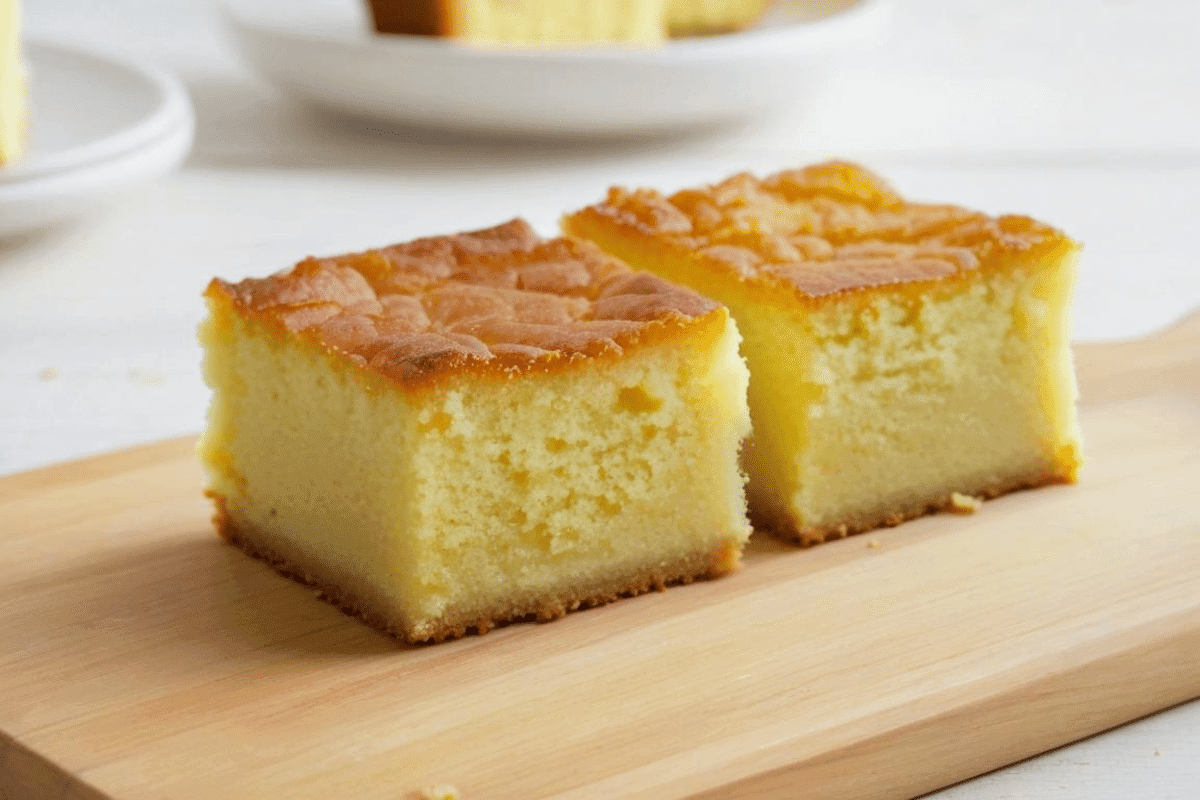
Conclusion
Butter cake is a timeless dessert that never goes out of style. Its simplicity, versatility, and deliciously rich flavor make it a favorite among bakers of all skill levels. Whether you’re making a classic version or adapting it to suit dietary preferences, butter cake is sure to please.
So, what are you waiting for? Grab your ingredients, and start baking the perfect butter cake today!
Print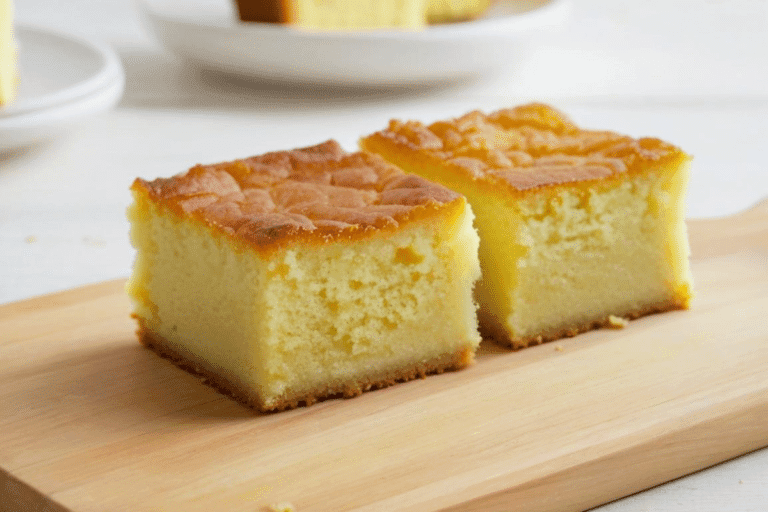
Butter Cake Recipe: Simple, Moist, and Delicious
A simple and moist butter cake recipe that’s perfect for any occasion. With easy-to-follow steps and customizable variations, this butter cake can be made vegan or gluten-free with just a few substitutions.
- Total Time: 45 minutes
- Yield: 12 servings
Ingredients
- 1 cup (230g) unsalted butter, softened
- 1 ½ cups (300g) granulated sugar
- 4 large eggs
- 2 ¾ cups (340g) all-purpose flour
- 1 ½ tsp baking powder
- ¼ tsp salt
- ¾ cup (180ml) milk
- 2 tsp vanilla extract
Instructions
- Preheat oven to 350°F (175°C). Grease and line two 9-inch round cake pans with parchment paper.
- In a large bowl, cream the butter and sugar for 3-5 minutes until light and fluffy.
- Add the eggs one at a time, mixing well after each addition. Stir in the vanilla extract.
- In a separate bowl, whisk together flour, baking powder, and salt.
- Gradually add the dry ingredients to the wet mixture, alternating with milk. Do not overmix.
- Divide the batter evenly between the prepared pans and smooth the tops.
- Bake for 25-30 minutes, or until a toothpick inserted comes out clean.
- Let the cakes cool in the pans for 10 minutes before transferring to a wire rack to cool completely.
Notes
- For a vegan version, substitute butter with plant-based margarine and eggs with flax eggs.
- For a gluten-free option, use a gluten-free all-purpose flour blend.
- The cake can be stored in an airtight container at room temperature for 2-3 days or frozen for up to 3 months.
- Prep Time: 15 minutes
- Cook Time: 30 minutes
- Category: Desserts
- Method: Baking
- Cuisine: American
Nutrition
- Serving Size: 1 slice (1/12 of the cake)
- Calories: 350-400
- Sugar: 30-35g
- Sodium: 200-250mg
- Fat: 18-20g
- Saturated Fat: 10-12g
- Unsaturated Fat: 4-6g
- Trans Fat: 0g
- Carbohydrates: 45-50g
- Fiber: 1g
- Protein: 5-6g
- Cholesterol: 100-120mg

